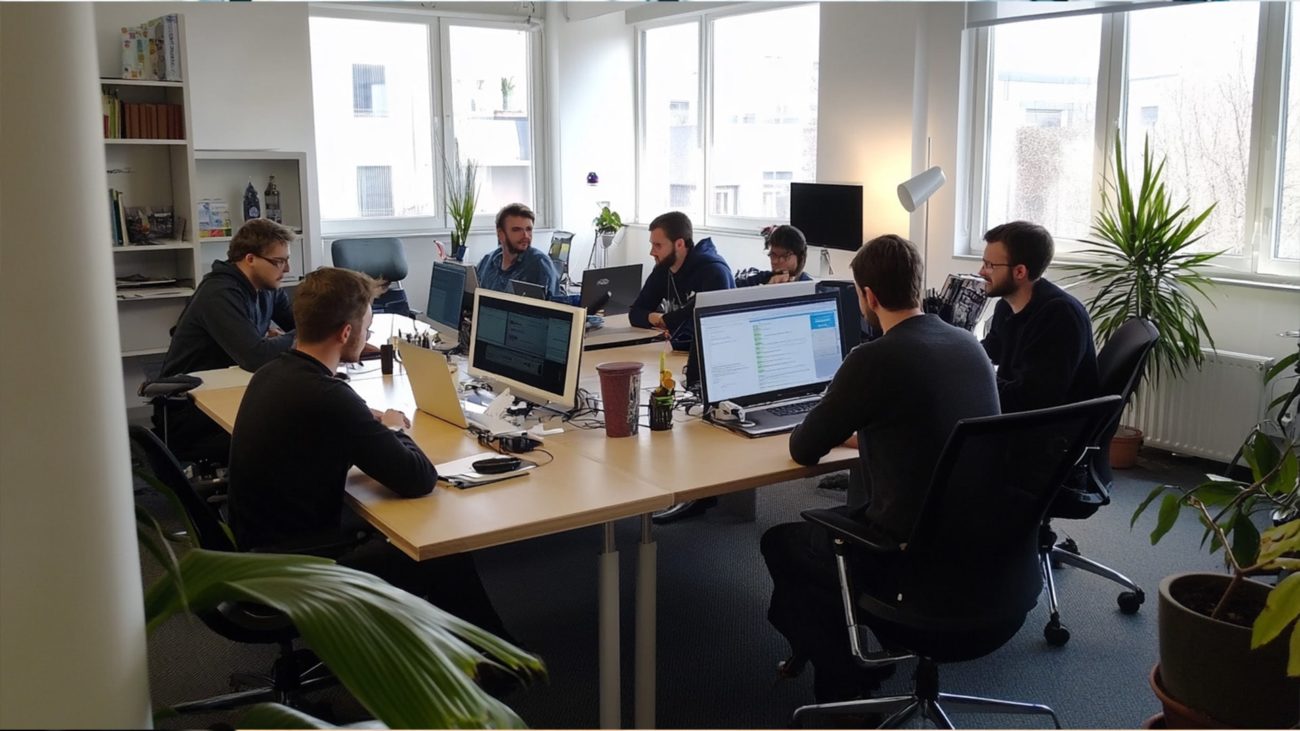Why Modernizing Legacy Systems is no longer optional
For business leaders, modernizing legacy systems is no longer an option—it’s a necessity. As organizations strive to stay competitive, the shift towards AI-powered automation, enhanced security, and scalable architectures is inevitable. However, many companies still hesitate, fearing business disruptions while ignoring the compounding risks of outdated technology.
Let’s break down the key problems of legacy systems and how modernization offers tangible benefits to overcome these challenges
1. High Maintenance Costs & Technical Debt
Problem:
- Maintaining legacy systems is costly due to outdated hardware and expensive vendor support.
- Engineers spend more time fixing old software rather than innovating.
- Custom integrations become increasingly difficult and expensive.

Benefit:
- Lower Total Cost of Ownership (TCO) with cloud-native and modernized systems.
- Reduce maintenance overhead and free up resources for innovation.
- Eliminate dependency on outdated technologies and expensive workarounds.
2. Security & Compliance Vulnerabilities

Problem:
- Legacy systems lack encryption, zero-trust security models, and automated patching.
- Regulatory compliance (GDPR, HIPAA, SOC2) is difficult to maintain.
- Increased risk of cyberattacks and ransomware due to outdated security protocols.
Benefit:
- Real-time security enforcement with automated updates and AI-driven threat detection.
- Seamless compliance tracking to avoid regulatory fines.
Strengthened data protection through modern identity management solutions.
3. Limited AI & Automation Readiness
Problem:
- Legacy systems lack the processing power and API frameworks needed for AI-driven automation.
- AI copilots, predictive analytics, and intelligent workflows are difficult to integrate.
- Competitors leverage AI-driven insights while legacy-bound businesses fall behind.

Benefit:
- Enable AI-powered automation and intelligent decision-making.
- Integrate AI-driven copilots and real-time data processing.
Gain a competitive edge with predictive analytics and NLP-driven insights.
4. Slow, Inefficient Decision-Making

Problem:
- Data silos and batch processing delay decision-making.
- Executives rely on outdated reports instead of real-time analytics.
- Lack of AI-powered dashboards makes insight retrieval cumbersome.
Benefit:
- Real-time data streaming for instant decision-making.
- AI-driven analytics and self-service dashboards for better insights.
Improved business agility with faster market adaptation.
5. Poor Developer Experience & Innovation Blockers
Problem:
- Developers spend excessive time on manual deployments and bug fixes.
- No CI/CD pipelines or DevOps automation slows release cycles.
- Limited API integration capabilities hinder scalability.

Benefit:
- CI/CD automation accelerates deployment and reduces errors.
- Enhanced developer productivity with modern toolchains.
Seamless integration with SaaS, AI services, and cloud-native applications.
6. Customer & Employee Frustration

Problem:
- Customers expect fast, AI-assisted self-service experiences, but legacy systems don’t support them.
- Outdated UIs frustrate employees and slow down workflows.
- Poor system performance affects both customer retention and employee productivity.
Benefit:
- AI-driven chatbots and real-time support for seamless customer interactions.
- Streamlined workflows that enhance employee efficiency.
Faster system performance, reducing downtime and frustration.
7. Scaling Challenges & Vendor Lock-in
Problem:
- Monolithic architectures make it difficult to scale operations.
- Dependency on proprietary vendors limits flexibility.
- Legacy systems cannot support multi-cloud, hybrid, or edge computing infrastructures.

Benefit:
- Cloud-native architectures enable effortless scalability.
- API-first approaches remove vendor dependencies.
Future-proof infrastructure that supports emerging technologies.
8. Limited Hybrid Work & Collaboration Support

Problem:
- Remote teams struggle with outdated VPNs and slow remote access tools.
- Inefficient collaboration workflows cause delays.
- Security gaps in remote access increase cyber risks.
Benefit:
- AI-powered collaboration tools for seamless hybrid work.
- Secure, zero-trust access to business applications.
Real-time document sharing and automated meeting assistance.
9. Lack of Real-Time Personalization & AI-Driven Customer Insights
Problem:
- Legacy systems cannot process real-time customer behavior for hyper-personalization.
- Industries like e-commerce, banking, and healthcare demand AI-powered insights to optimize customer journeys.
- Businesses miss out on predictive analytics and behavior-based automation, leading to higher churn and lost revenue.

Benefit:
- AI-driven personalization improves customer engagement and retention.
- Real-time data processing enables tailored recommendations and predictive insights.
Enhanced customer journeys drive revenue growth and customer satisfaction.
10. Difficulty in Supporting New Revenue Models (SaaS, Subscription, Pay-per-Use, etc.)

Problem:
- Legacy billing and invoicing engines cannot support modern monetization strategies.
- Outdated ERP & CRM systems struggle with usage-based billing and AI-driven pricing optimization.
- Manual workflows and data silos delay financial reporting, reducing business agility.
Benefit:
- Agile pricing models support SaaS, pay-per-use, and subscription-based revenue streams.
- Automated billing and invoicing reduce errors and improve cash flow.
Data-driven financial insights enable flexible and scalable monetization models.
11. High User Onboarding & Training Costs
Problem:
- Steep learning curves due to outdated UI navigation and inefficient workflows.
- Extensive manual training is required for new employees.
- Long onboarding cycles reduce productivity and increase frustration.

Benefit:
- User-friendly, AI-assisted interfaces simplify onboarding.
- Automated training modules enhance efficiency and reduce training time.
Improved user experience leads to higher productivity and faster adoption.
12. Limited Support for ESG, Carbon Footprint Reduction & Sustainability Goals

Problem:
- Legacy data centers consume excessive energy, increasing carbon footprints.
- Companies with inefficient IT stacks struggle to meet sustainability-driven investor expectations.
- Cloud-first, energy-efficient operations are difficult to achieve with outdated infrastructures.
Benefit:
- Cloud migration and AI-based workload optimization reduce energy consumption.
- Enhanced sustainability practices align with ESG goals and investor requirements.
AI-driven energy management minimizes resource wastage.
13. Risk of Losing Talent Due to Outdated Tech Stacks
Problem:
- Engineers prefer modern, scalable technologies over maintaining outdated legacy systems.
- Companies face longer hiring cycles and skill gaps due to unattractive tech stacks.
- Heavy reliance on specialized, expensive consultants instead of fostering internal teams.

Benefit:
- Modernizing tech stacks attracts top engineering talent.
- Improved developer experience leads to higher retention and innovation capacity.
Reduced reliance on external consultants by strengthening in-house expertise.
14. Data Silos & Lack of Unified Data Strategy

Problem:
- Legacy databases and applications operate in silos, preventing seamless data integration.
- Large-scale data analysis, forecasting, and reporting are difficult and inefficient.
- AI-driven business intelligence and predictive analytics require unified, scalable cloud-based strategies.
Benefit:
- Modern data architectures enable seamless data flow across departments.
- AI-driven insights, self-service analytics, and intelligent automation enhance decision-making.
Scalable cloud-based solutions improve efficiency and cross-functional collaboration.
15. Inability to Support Edge Computing & IoT Expansion
Problem:
- Legacy systems cannot handle distributed computing for real-time AI and IoT data processing.
- Industries like manufacturing, logistics, and healthcare require real-time edge analytics.
- Centralized, latency-heavy processing models make real-time computing impossible.

Benefit:
- Modern architectures support real-time edge processing and AI-driven automation.
- Seamless IoT integration enhances predictive maintenance and smart monitoring.
5G-powered solutions enable next-gen AI applications with real-time analytics.
Why Now is the Time to Modernize
✅ Legacy system costs are increasing, while cloud-native AI solutions are becoming more affordable and accessible.
✅ Competitors are accelerating AI adoption—businesses delaying modernization risk losing market share to faster, AI-enabled companies.
✅ Security threats are evolving—outdated tech exposes organizations to breaches, compliance risks, and operational failures.
✅ Technology Leaders are under pressure to deliver intelligent, scalable, and AI-ready solutions that enable smarter decision-making, faster innovation, and higher efficiency.
Ready to Future-Proof Your Enterprise?
Let’s discuss how to modernize your legacy systems—without disrupting Business As Usual.
